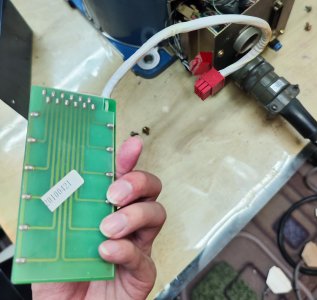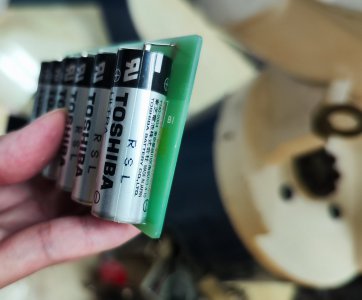- Joined
- Mar 26, 2018
- Messages
- 2,724
Hey! Major congrats! That’s awesome work!
I hope you can get these working for your factory. If you have any other questions, feel free to chat any time.
Here is a list of good to know stuff in a random order:
Mike
I hope you can get these working for your factory. If you have any other questions, feel free to chat any time.
Here is a list of good to know stuff in a random order:
- If you want your program to loop forever, start the program with [CYCLE] [9] [START]
- The end of arm tooling connector is hard to find, is discontinued, and only limited quantity (<30) were available world wide. I’d buy one or two sooner as opposed to later.
- Your one RC3 controller appears to be missing the IO module. I don’t believe it can run without one.
- Be careful to identify what style of IO module you have installed. The manuals show SOURCING INPUTS and SINKING OUTPUTS. This was the default configuration for Asian robots. My robot and the one from a guy I’ve been chatting with in Germany has SINKING INPUTS and SOURCING OUTPUTS. There is a manual addendum in the document package for this wiring. If you get it wrong, you’ll blow fuses.
- When programming, it is easiest to record the robot position while writing the program, however you can’t easily edit the position later. I’d recommend using a Joint or Position variable and saving the robot position to that. Then you can reuse that position multiple times in your program or easily edit it.
- There is no “go to position” function built into the robot to edit a point. I created a simple program that send the robot to a particular position variable and then ends. If I want to edit a saved position, I quickly edit that program to change the position variable, run the program to send the robot to the position, jog as necessary to tweak the point, then overwrite the saved point.
- I’ve started learning the more advanced programming instructions like multitasking and serial data transfers. If you want to mess around with this, I can share what I know.
- Never EVER remove or adjust the hard stops from the robot. These set the RANG positions. If they move, the RANG values will be wrong and the robot will never move correctly again. It requires some very complicated and accurate metrology equipment to derive new RANG values.
Mike



